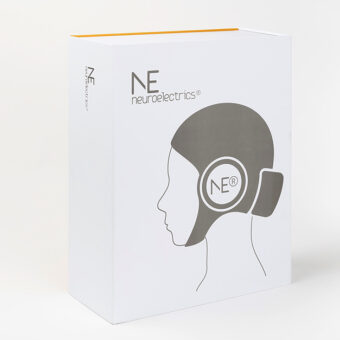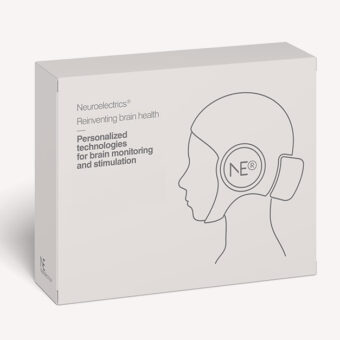Medical BCI-based applications are still limited. Neuroelectrics is addressing most critical issues so that they can be effectively adopted in clinical settings or in users’ homes.
Carabalona et al. (2009) discussed several points that need to be considered when designing, selecting and using a BCI system for neurorehabilitation purposes. In particular, they emphasized the importance of technology acceptance and usability, as well as, issues related to the impact on the patient’s emotional and motivational states. Although some users and assistive technology experts may be quite satisfied with some BCI devices, others could not imagine using most of the devices in daily life without further improvements (Zickler et al., 2011). User-centered design is critical, and testing medical BCI applications with healthy users may be inadequate.
Overall, medical and other non-medical BCI emerging applications may encounter similar bottlenecks. Main obstacles vary from the long preparation and setup times, to the ergonomics of the electrode caps, and the low speed and lack of reliability of the BCI system. The learning curve is also a major drawback. That is, the user must learn completely new skills to operate a BCI system. Therefore, there is still an important need to overcome the following identified “key factors” (Allison, 2010) for better BCI adoption:
- Cost (financial, help, expertise, training, invasiveness, time, attention, fatigue)
- Throughput (accuracy, speed, latency, effective throughput)
- Utility (support, flexibility, reliability, illiteracy)
- Integration (functional, distraction quotient, hybrid/combined BCIs, usability)
- Appearance (cosmetics, style, media, advertising)

Following a user-centered approach and increasing the engagement with the appropriate end users while designing, selecting and using a BCI system will offer the opportunity to increase technology acceptance and usability. The possibility of using dry electrodes or solid-gel electrodes for EEG acquisition, and the monitoring of psychological effects during BCI tasks may give rise to a broader range of cognitive rehabilitation and stimulation programs (Otal et al., 2014).
Following such a view, Neuroelectrics keeps on working on non-conventional sensors for less obtrusive brain signal recording, and affective interfaces able to adapt the BCI according to emotional status changes in the patient.
___
Allison, B. Z. (2010). Toward Ubiquitous BCIs. In B. Graimann, B. Z. Allison, & G. Pfurtscheller (Eds.), Brain-Computer Interfaces. Springer Berlin Heidelberg.
Carabalona, R., Castiglioni, P., & Gramatica, F. (2009). Brain–computer interfaces and neurorehabilitation. Stud. Health Technol. Inform 145: 160-176.
Otal, B., Vargiu, E., & Miralles, F. (2014). Towards BCI Cognitive Stimulation: From Bottlenecks to Opportunities. Proceedings of the 6th International Brain-Computer Interface Conference 2014, Graz, Austria.
Zickler, C., Riccio, A., Leotta, F., Hillian-Tress, S., Halder, S., Holz, E., Staiger-Sälzer, P., Hoogerwerf, E.J., Desideri, L., Mattia, D., & Kübler, A. (2011). A brain-computer interface as input channel for a standard assistive technology software. Journal of Clinical EEG & Neuroscience.
Part of this work was based on the original manuscript, Towards BCI Cognitive Stimulation: From Bottlenecks to Opportunities. There, we explored potential new opportunities and research breakthroughs that may consider BCI based cognitive stimulation applications to enhance people overall performance in clinical and non-clinical settings to maintain general wellbeing and quality of life.




